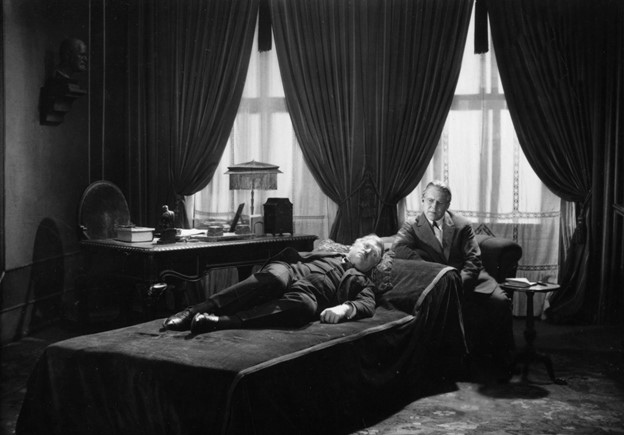Secrets of a Soul (1926)
G.W. Pabst's "Secrets of a Soul"
1920s Germany was a great time and place for creativity in filmmaking. Unlike the directors of Hollywood, the directors of German cinema at the time were given so much creative freedom. With that freedom, they could explore filmmaking styles, techniques, and controversial subject matters. G.W. Pabst was a director who explored many different ways to make a film with varying subject matters. His 1926 film, "Secrets of a Soul," examines the field of psychology. Sigmund Freud had already published the phenomenon, "The Ego and the Id" in 1923. Psychology and psychoanalytics had become a public fascination. With "Secrets of the Soul," Pabst explores an example of how psychoanalytics can benefit a contemporary world.
The film's protagonist is a learned professor who begins to develop a strange symptom in which he cannot touch knives. This happens immediately after a woman shouts from a nearby building that a man was murdered with a razor. Just then, the professor accidentally cuts the back of his wife's neck while he's shaving her. At first, the viewer is led to believe that this man feels guilty because he knows he is the murderer. However, we then experience this man's dreams, which take us on a surreal exploration into his subconscious. Events with no context occur, like a clocktower rising up out of the ground, his wife's cousin shoots him as he tries to fly away, and ringing tower bells that are actually women's heads laughing at him. The man awakens and seeks psychological help from a psychoanalyst. Through the session, the psychoanalyst breaks down the different constructs of the dream and how it relates to deep-seated subconscious issues within the professor. The professor learns what is causing his panic - he is guilty over his inability to provide his wife with and child and he is jealous of his wife's cousin. Upon learning this about himself, the professor is able to pick up a knife again. Not only that, but he is also able to live happily ever after with his wife in a beautiful countryside home with their new baby.
The film showcases a psychotic issue. It then shows us a dream sequence and then breaks down the dream sequence with the added context of how it connects to the psychotic issue. With this, the film becomes a promotion for the psychology field that Freud had made popular. Hans Neumann, the producer on the film, was a believer in Freud's work and even tried to get Freud to help with the film. Freud never got back to Neumann, but a close associate of Freud named Karl Abraham did, and eventually became a consultant on the film. The film does its best to showcase how therapy and psychoanalysis can improve your ability to understand and control your impulsive behaviors.




Comments
Post a Comment